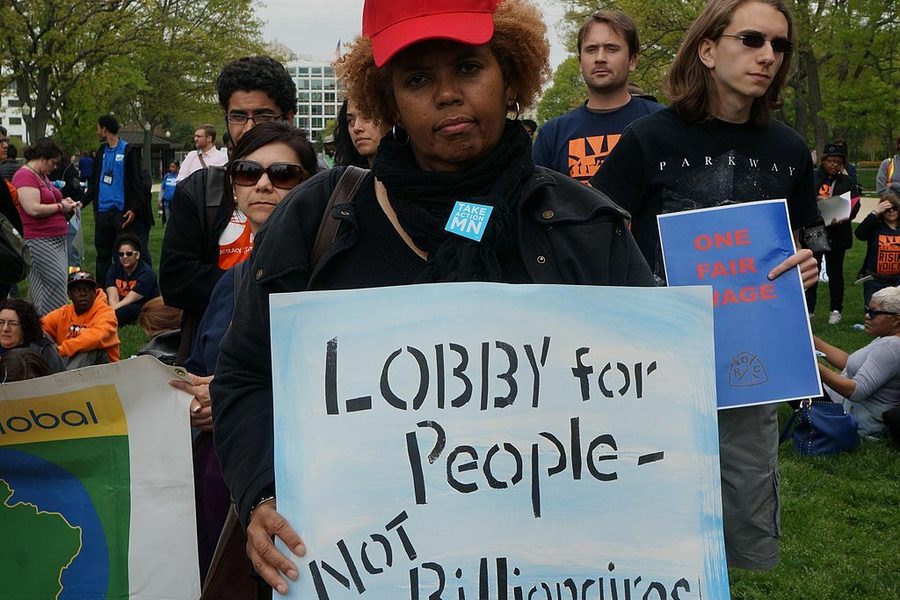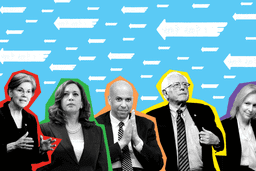
The income gap between the classes is growing at a startling pace in the United States. In 1980, the top 1 percent earned on average 27 times more than workers in the bottom 50 percent. Today, they earn 81 times more.
The widening gap is “due to a boom in capital income,” according to research by French economist Thomas Piketty. That means the rich are living off of their wealth rather than investing it in businesses that create jobs, as Republican, supply-side economics predicts they would do.
Piketty played a pivotal role in pushing income inequality to the center of public discussions in 2013 with his book, Capital in the Twenty-First Century. In a new working paper, he and his co-authors report that the average national income per adult grew by 61 percent in the United States between 1980 and 2014. But only the highest earners benefited from that growth.
For those in the top 1 percent, income rose 205 percent. Meanwhile, the average pre-tax income of the bottom 50 percent of workers was basically unchanged, stagnating “at about $16,000 per adult after adjusting for inflation,” the paper reads.
It notes that this trend has important political consequences: “An economy that fails to deliver growth for half of its people for an entire generation is bound to generate discontent with the status quo and a rejection of establishment politics.”
But the authors also note that the trend is not inevitable or irreversible. In France, for example, the bottom 50 percent of pre-tax income grew by about the same rate — 32 percent — as the overall national income per adult from 1980 to 2014.
The difference? In the United States, “the stagnation of bottom 50 percent of incomes and the upsurge in the top 1 percent coincided with drastically reduced progressive taxation, widespread deregulation of industries and services, particularly the financial services industry, weakened unions, and an eroding minimum wage,” the paper reads.
Piketty and Portland
President-elect Donald Trump’s administration promises at least four years of policies that will expand the gap in earnings. But a few glimmers of hope are emerging at the local level.
The city council of Portland, Oregon, for example, recently approved a tax on public companies that pay executives more than 100 times the median pay of workers. The surtax will increase corporate income tax by 10 percent if executive pay is less than 250 times the median pay for workers, and by 25 percent if it’s 250 and over. The tax could potentially affect more than 500 companies and raise between $2.5 million and $3.5 million per year.
The council cited Piketty’s Capital in the Twenty-First Century in the ordinance creating the tax. Steve Novick, the city commissioner behind it, recently wrote that “the dramatic growth of inequality has been fueled by very high compensation of a few managers at big corporations, as illustrated by the fact that 60 to 70 percent of people in the top 0.1 percent of income in the United States are highly paid executives at large firms.”
Novick said that he liked the idea when he first heard about it because it’s “the closest thing I’d seen to a tax on inequality itself.” He also said that “extreme economic inequality is — next to global warming — the biggest problem we have in our society.”
Investing in children
There is also hopeful news in the educational realm. James Heckman, a Nobel Laureate in economics at the University of Chicago who has spent much of his career studying inequality and early childhood education, recently published a paper that lays out the results of a long-term study.
In “The Life-cycle Benefits of an Influential Early Childhood Program,” Heckman and others report that high-quality programs for children from birth to age 5 have long-term positive effects across a range of metrics, including health, IQ, participation in crime, quality of life and labor income.
Predictably, perhaps, the effects of the programs weren’t limited to children. High-quality early childhood education also allowed mothers “to enter the workforce and increase earnings while their children gained the foundational skills to make them more productive in the future workforce,” a summary of the paper reads.
“While the costs of comprehensive early childhood education are high, the rate of return of [high-quality programs] imply that these costs are good investments. Every dollar spent on high quality, birth-to-five programs for disadvantaged children delivers a 13% per annum return on investment.”
The research is important because early childhood education has bipartisan support. Over the summer, the Learning Policy Institute released a report that highlighted best practices from four states that have successful early childhood education programs. Two of them — Michigan and North Carolina — are swing states in national politics. The others are Washington and a solidly red state, West Virginia.
Although it isn’t a substitute for other policy tools to address inequality, like progressive taxes, early childhood education has strong bipartisan support because it produces measurable payoffs for both children and the economy. One study found, for example, that the economic benefit of closing the educational achievement gaps between children of different classes would be $70 billion each year.
Early childhood education fosters an “increasingly productive workforce that will boost economic growth, provide budgetary savings at the state and federal levels, and lead to reductions in future generations’ involvement with the criminal justice system,” the Economic Policy Institute recently noted. “These benefits will, of course, materialize only in coming decades when today’s children have grown up. But the research is clear that they will materialize — and when they do, they are permanent.”








